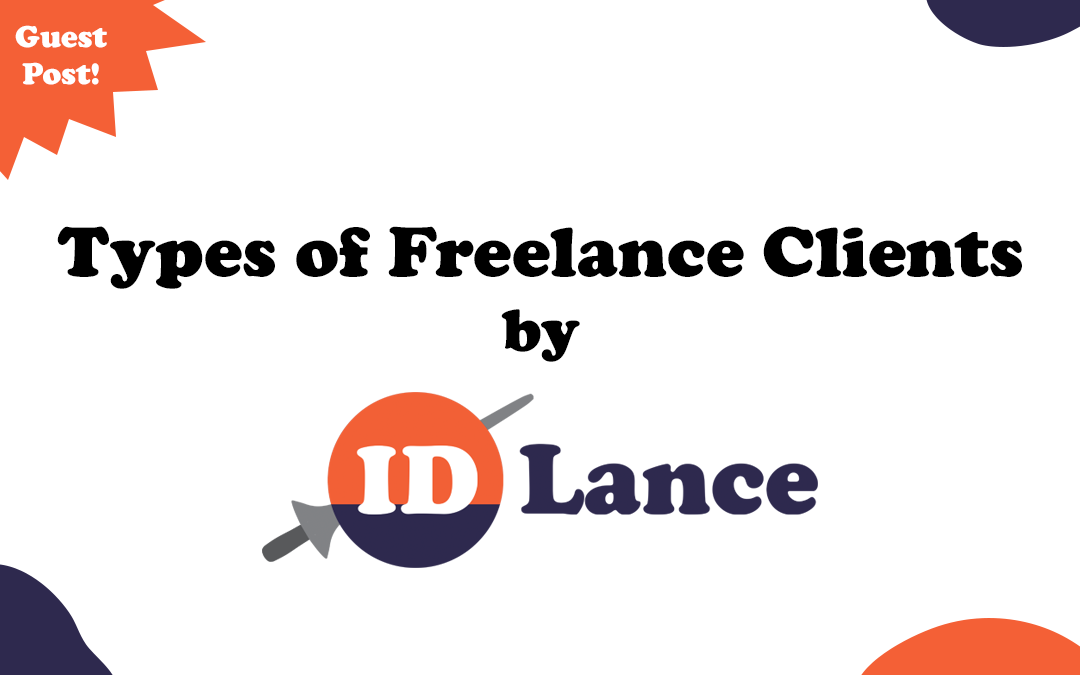Hey there! Andrea here. I’m a co-Head Honcho (alongside Parker A. Grant) at IDLance here to talk to you about types of freelance clients. Thanks to Chris for letting us join the Learning Carton party! We’ll try to keep the lampshade wearing to a minimum.
If you haven’t heard of IDLance before – which is totally fine we’re not mad about it – let’s get that out of the way. IDLance is an ever-growing collection of 100% self-paced modules full of practical information, guidance, handy templates, and emotional support (mental health matters, people!) for those looking to dive into the cool, refreshing waters of freelance instructional design. It’s also a community made up of people who share similar business-owning hopes and dreams.
The ID in IDLance is for “Instructional Design” and the “Lance” is for “freeLance.” But we also see ourselves as the lance (you know, medieval sword thing) that’s going to help you cut away from crappy office drudgery and forge ahead into your new life! Yeah, that’s intense. But we like it that way. Oh, and we launch TOMORROW!
Anyway, in this post, I want to talk about the two types of freelance clients that most instructional design freelancers usually target: direct and indirect.
Two types of freelance clients
Remember when you were just a lil tyke and your mommy or daddy (or legal guardian), would order for you at restaurants? And then one day it dawned on you, as you were sitting there attempting to draw a chameleon from memory on your placemat with those cheap, waxy crayons: “Oh sh*t! I can order the chicken tendies myself!”
That beautiful and poignant childhood transition offers many parallels to a person’s new life as a freelancer. Before a new freelie (our term for freelancers) heads out and goes hunting for their perfect market fit, there’s some stuff they should know. No matter the industry, there are two main ways of finding and working with clients:
- Direct: You found ‘em, you work for ‘em…directly (duh). No middle person needed. Cash directly from their hands into your giant JNCO jeans pocket.
- Indirect: There’s at least one person or org between you and the client, and your pay usually comes from that middle person. More exposure to a wide array of projects, less messy contract stuff for you.
Newbies probably want to rip that band-aid off ASAP and get their first gig quickly. If that sounds like you, target the indirect clients first. You’ll be exposed to a variety of tasks and industries, which is great for building up your portfolio and figuring out what you like (or loathe)!
Smart Choice
It’s a smart choice for beginners because it minimizes the time they’ll need to spend on marketing, selling themselves, and agonizing over their LinkedIn profile pic. While this is an important part of business, the early days call for spending most of the time honing the craft by jumping in on projects and developing a diverse portfolio. A slammin’ portfolio will actually enable the freelie to start landing quality direct clients all on their own.
Pro Tip: Even after you quit your 9-5, don’t be afraid to contact your former employer if it seems like they could use your services. If they hire you as a freelancer, then you rock! You’ve technically landed your first direct client! But don’t sit too high and mighty just yet, one direct client does not beget another…or something like that. Keep working on that portfolio and putting yourself out there to a variety of people and orgs.
And remember, even after you’ve started successfully ordering the chicken tendies yourself (aka finding your own direct clients), sometimes it’s a nice treat to have mommy order for you once in a while – if the timing is right. Indirect clients are always an excellent way to gain a different experience and expand your mad skills.
Let’s recap:
-
- If you’re starting out, target the indirect clients first. These include other freelancers, staffing/placement firms, eLearning content development providers, and training providers.
- If your former employer wants to hire you as a freelancer, go for it! Take advantage of this opportunity…. but get your multi-tasking game on fleek. Keep searching for those indirect goodies at the same time. Yes, we said “on fleek.” Deal with it.
- After you have completed a bunch of small indirect client projects, start going after direct clients. Direct clients often pay more per hour or per project. Woop woop!
Learn more:
Beyond freelance clients, if you want to learn more about starting your own business in the eLearning/instructional design world, come visit us over at IDLance.com. We’re trying to take out the trepidation and endless Googling involved in making the leap from salaried to full-time instructional design freelancer.
I know when I started out as a freelancer I had so many questions and conversations where I received vague advice that sometimes intimidated me rather than help me get started. I don’t want anyone else to have to go through that.
Thanks for reading this far and I hope to see you on the forums on IDLance!


